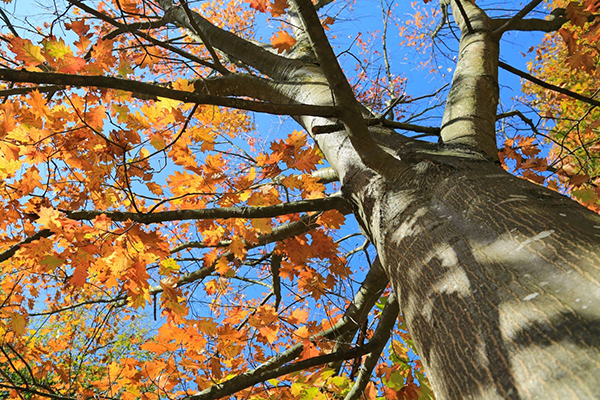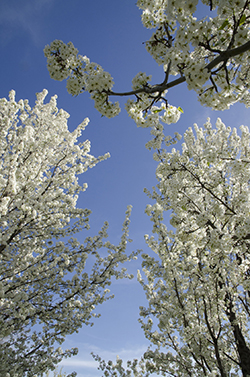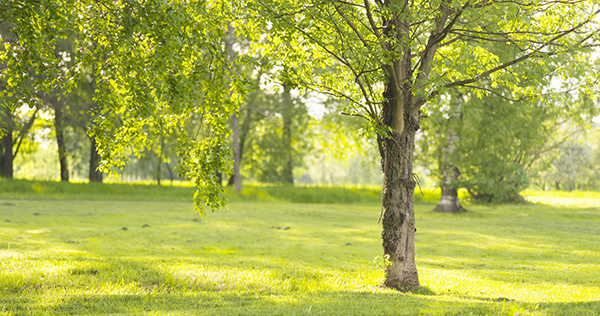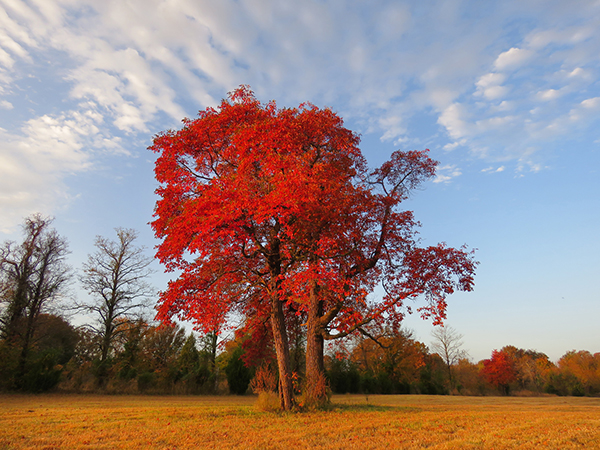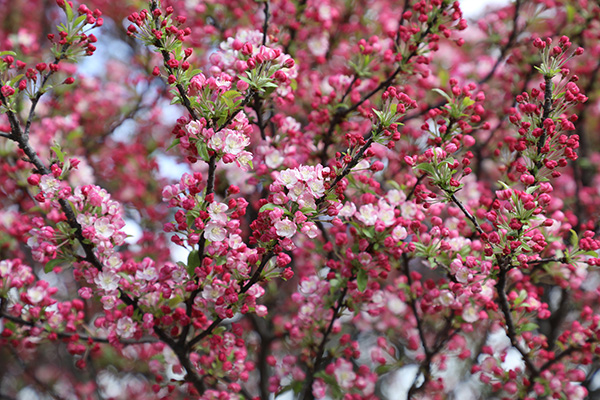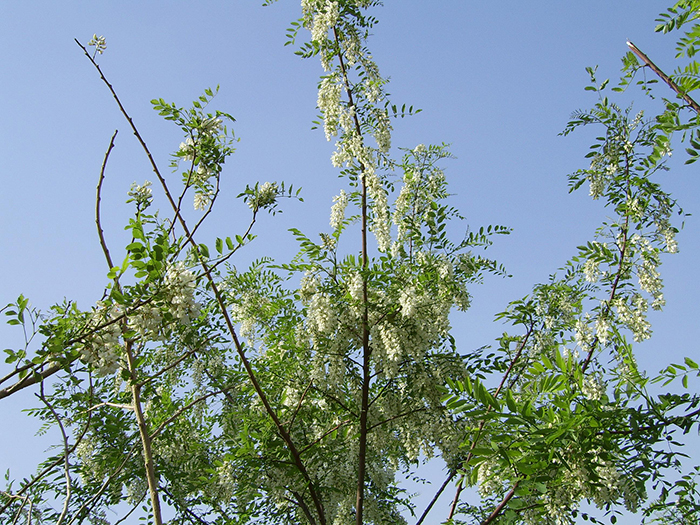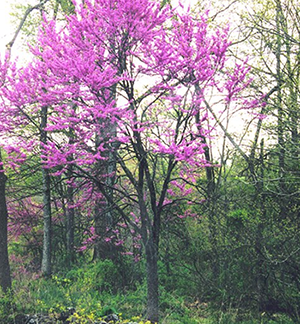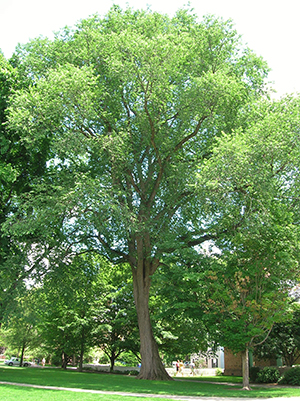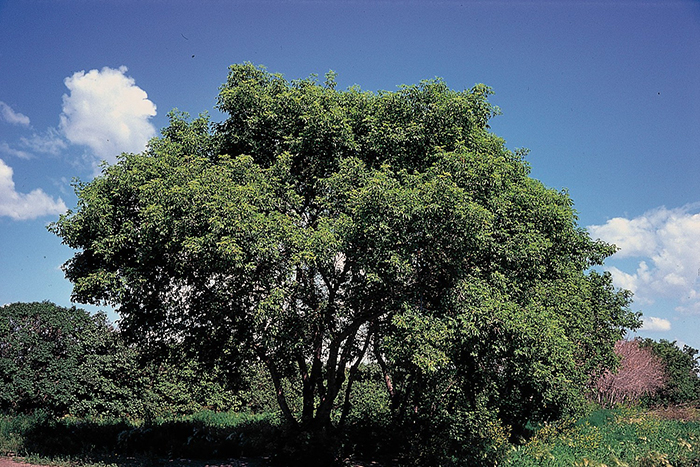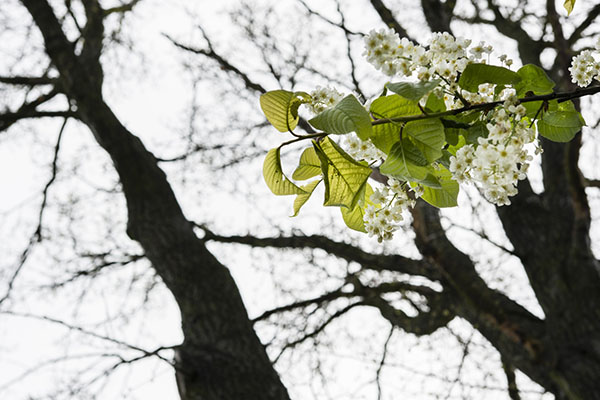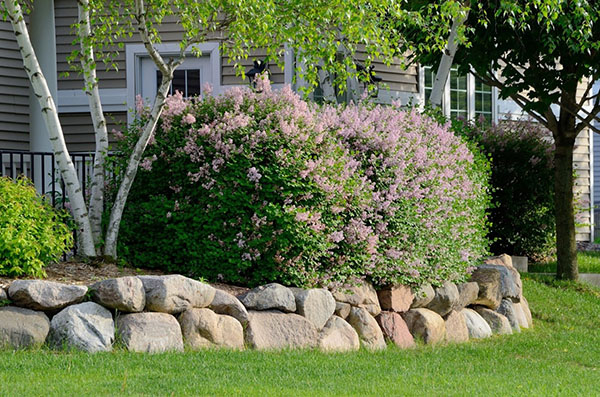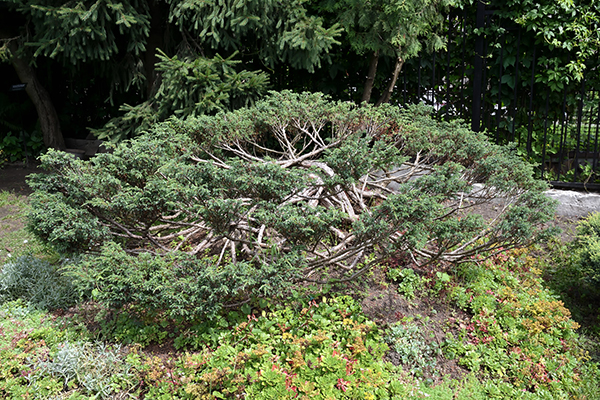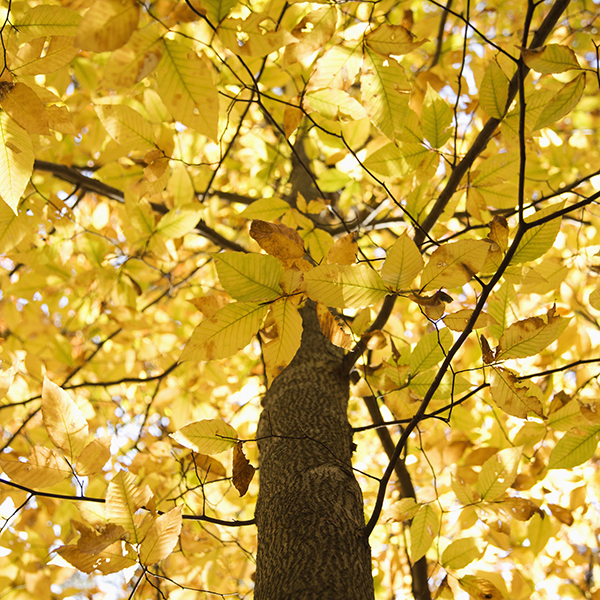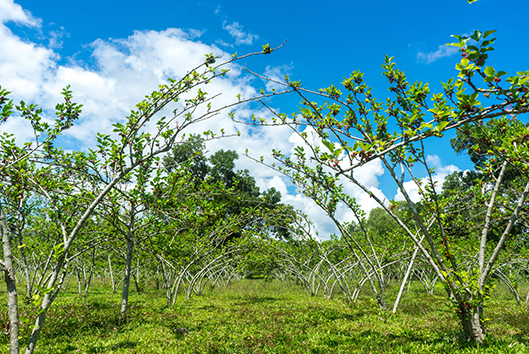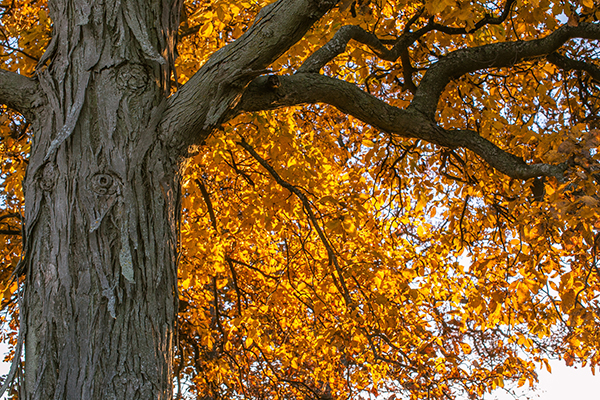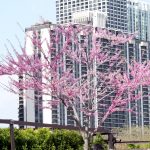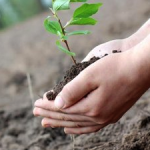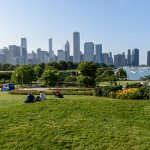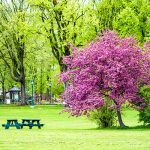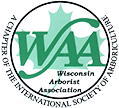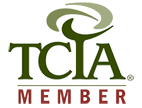The spring season is an exciting time in the Chicago area because residents are treated to warmer weather, more hours of sunlight, and blooming trees and flowers all at once. Now that the spring weather has finally arrived in Chicago, residents can expect to see the flowers and foliage of our trees and shrubs fill out over the next several weeks. One of the many unique characteristics about Chicago that makes it such a great city is the expansive urban forestry throughout the city and its suburbs, and the wide diversity of tree species it includes.
Before Chicago was incorporated as a city in 1837, there were only 22 different tree species in the area. It may be surprising to know that according to the Morton Arboretum, there are now 218 officially recorded tree species just in the city of Chicago alone. That is a significant increase in tree species in a span of about 180 years. The biggest factor in this increase is the residents of Chicago themselves as most of Chicago’s trees are found on residential property. Many residential areas in Chicago are tucked away from the busiest and dirtiest streets where the air is warmer and the soil is richer in nutrients. This creates ideal conditions for many of Chicago’s most common trees to thrive.
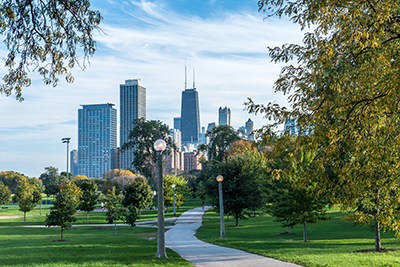
Hendricksen Tree Care offers professional tree care services throughout the Northwest Chicago suburbs such as Glenview & Northbrook, IL
The diversity of tree species in Chicago and its suburbs is part of what makes the spring season so special in this area. However, in order to keep Chicago trees beautiful, they need the proper care and protection from diseases, pests, and other factors that can cause harm. At Hendricksen Tree Care, our professional arborists are compassionate about caring for the many different tree species in the Chicago area. We provide complete tree services, including tree care, maintenance, and pruning, for trees on residential and commercial properties. Our arborists have extensive knowledge about the most common trees in the area and can effectively treat trees affected by insects or disease.
One of the ways that we at Hendricksen Tree Care would like to show our commitment to caring for the trees of Chicago is to feature a blog series about the most common types of trees in the area. Knowing about the tree species on your property can help you take better care of them so that they live long and healthy lives. Below are brief descriptions of the most common tree species in the Chicago area. In the coming weeks & months, we will feature a different one of these tree species in its own tree blog that will include in-depth information about the species and the best ways to provide care.
Watch more about tree species in Chicagoland
If you do need a professional arborist to provide tree care services in the north or northwest Chicago suburbs, please do not hesitate to contact Hendricksen Tree Care.
Oak Trees
Before the development of Chicago, oak trees were the most common trees in the area. These large trees provided food and shelter for much of the local wildlife. Oak trees need plenty of space to grow so as Chicago and its suburbs developed, these trees became scarce. The only way new oak trees will appear in the Chicago area is if they are planted.
There are many species of oak found throughout the world in the northern hemisphere. Oaks include both deciduous and evergreen species and many oak species can grow up to 80 feet tall and 80 feet wide. Oak leaves can be serrated or smooth and they grow in spirals that also include acorns which contain an oak seed. Oak trees native to the Chicago area include the white oak, swamp white oak, shingle oak, and Chinkapin oak.
Learn more about Oak Trees in Chicago & Surrounding suburbs.
Dogwood Trees
Dogwood trees are mostly deciduous trees that can be identified by their bark, berries, and flower clusters. There are many types of dogwood trees found throughout the U.S. These trees can grow to be 15 to 25 feet tall with leaves that have smooth edges and curving veins. The flowers may look different between the different species of dogwoods, but all dogwood species have clusters of flowers that are typically white in color. All dogwoods also bear fruits called drupes which are edible, brightly colored berry-like fruits that contain hard pits. The Pagoda dogwood and Cornelius cherry dogwood are native to the Chicago area.
Learn more about Dogwood Trees in Chicago & Surrounding suburbs.
Ash Trees
Ash trees are tall, flowering trees that are part of the same family of species that includes olives and lilacs. These trees typically grow 40 to 60 feet in height, but it is possible for some species of ash to reach 80 feet. Ash species have simple leaves that grow opposite on their whorls and their flowers grow in clusters. The appearance of the flower will differ slightly depending on the species and sex of the tree. Ash flower clusters tend to consist of small while-pedaled flowers or green and purple clusters.
Just a few years ago, the green and white ash trees were common throughout Chicago. Unfortunately, ash trees have been disappearing from the region due to the damage caused by the invasive emerald ash borer.
Learn more about Ash Trees in Chicago & Surrounding suburbs.
Sassafras Trees
Sassafras is a genus of tree that contains three different species found in North America and East Asia. The species Sassafras albidum is the species of sassafras that is native to the Chicago area. These trees are deciduous and can grow anywhere from 15 to 40 feet in height on average. Sassafras trees have also been known to exceed this height as the tallest sassafras in the world is over 100 feet. These trees are known for their fragrance and the unusual characteristic of having up to three different leaf patterns on the same tree. The flowers of a Sassafras albidum are yellow in color and have six petals. These trees are dioecious which means that male and female flowers grow on separate trees. Female sassafras trees also bear dark blue drupes as its fruit.
The white sassafras, red sassafras, and silky sassafras can be found in the Chicago area.
Learn more about Sassafras Trees in Chicago & Surrounding suburbs.
Willow Trees
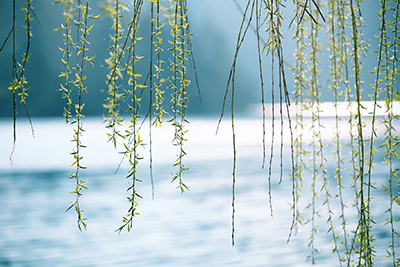
Weeping Willow Trees are Common Around Lakes in the Chicago Suburbs such as Arlington Heights & Park Ridge, IL. Learn more about Willow Trees
There are around 400 species of willow trees that are found throughout the Northern Hemisphere. Willow trees have watery sap, slender branches, and a strong, expansive root system. They can grow between 6 and 8 feet per year and reach up to 50 feet when fully grown. Most willow trees are deciduous with elongated, feather-veined leaves that are typically serrated. The flowers of a willow tree grow as catkins in clusters that cause the branches the droop, giving the willow its signature look. The black willow is one type of willow tree native to the Chicago area.
Learn more about Willow Trees in Chicago & Surrounding suburbs.
Crabapple Trees
Crabapple trees (Malus sp.) are very popular throughout the Midwest because of their showy, colorful spring flowers. They are also relatively small which makes them a great addition to most yards and landscapes. These trees are among the most colorful in the Chicago area as their flowers can be a range of colors including pink, purple, and red, and their large fruits may also appear as different colors such as orange, yellow, green, red, or purple. There are 55 different species of crabapple trees that range in size from medium trees (25-40 feet) to large shrubs known as cultivars (about 8 feet tall).
Learn more about Crabapple Trees in Chicago & Surrounding suburbs.
Locust Trees
Locust trees are medium to large deciduous trees that usually have thorns or prickles. There are two main types of locust trees found in Illinois; the honey locust (Gleditsia triacanthos) and the black locust (Robinia pseudoacacia), also referred to by some as “Chicago Blues.” Both of these species of locust trees flower in the spring and produce drooping clusters of cream-colored flowers. Even though locust trees are native to the Chicago region, they are considered somewhat invasive because they can cover open habitats with shade which shrinks the surrounding eco-system. Locust trees have been known to transform native grasslands into forested areas.
Learn more about Locust Trees in Chicago & Surrounding suburbs.
Eastern Redbud
The eastern redbud (Cercis canadensis) is a medium sized deciduous tree native to the Chicago area that is typically planted for ornamental purposes. They can grow anywhere between 15 and 40 feet and they have bright purplish-pink flowers that bloom along their dark branches early in the spring. The leaves of an eastern redbud are alternate, heart-shaped leaves that generally turn yellow in the fall. Eastern redbuds make great additions to yards and landscapes because of their size and colors, but they are vulnerable to diseases and borers, so they must be cared for properly.
Learn more about Eastern Redbud Trees in Chicago & Surrounding suburbs.
American Elm Trees
American elm trees (Ulmus americana) are large deciduous trees that can withstand the harsh conditions of the Chicago region. These trees were the most popular to plant during the 19th century, but the introduction of Dutch elm disease in the 1950s has ravaged much of the American elm population throughout the area. Elm trees are known for their large canopies and leaves that turn golden yellow in the fall. Because of Dutch elm disease, it is not recommended to plant a traditional American elm, but there are several species of hybrid elm trees that are control bred and much more resistant to disease.
Learn more about Elm Trees in Chicago & Surrounding suburbs.
Maple Trees
Maple trees (Acer sp.) are one of the most common and recognizable trees in the Chicago area. There are around 128 different species of maple trees that can be found in Asia, Europe, and northern Africa in addition to North America. Most species of maple have large lobed leaves that grow in an opposite arrangement and their leaves can turn any combination of red, orange, and yellow for brilliant fall colors. The fruits produced by maple trees are called samaras, commonly known as helicopters, which is another distinctive feature of maples. Depending on the species, maple trees can be used as shade trees or ornamental trees.
Learn more about Maple Trees in Chicago & Surrounding suburbs.
Black Cherry
The black cherry tree (Prunus serotina) is a large deciduous tree that is native to North America, including the Chicago area. These trees can be easily identified by their dark gray or black bark, clusters of white flowers, and reddish-purple cherry clusters. Black cherry trees grow quickly and can reach heights between 50 and 80 feet. They are typically found in wooded areas but have become more common in urban settings because their flowers make them desirable as an ornamental tree. The clusters of white 5-petal flowers that bloom in the spring are very showy and the leaves turn yellow to red in color in the fall.
Learn more about Black Cherry Trees in Chicago & Surrounding suburbs.
Birch Trees
Birch trees (Betula sp.) are medium sized, deciduous hard wood trees that are found in the Northern Hemisphere throughout North America, Europe, and Asia. There are around 60 known species of birch trees around the world with 15 species native to the U.S., including the Chicago area. Birch trees are easily recognized by their bark which peels off in paper-like plates. Birch bark can be several different colors including gray, white, black, and yellow and it also features horizontal lenticels. The flowers of birch trees grow in catkins and their leaves are oval in shape with serrated edges. The leaves turn to vibrant shades of red, orange, and yellow in the fall.
Learn more about Birch Trees in Chicago & Surrounding suburbs.
Eastern Red Cedar
The eastern red cedar tree (Juniperus virginiana) is one of the only species of juniper tree that is native to the Chicago area. These hardy evergreens are coniferous plants that produce berries and cones and they range widely in size from 3-5 foot shrubs to 40 foot tall trees. The foliage of eastern red cedars may appear as sharp needles or scale-like leaves that keep their color throughout the year. Male red cedars produce small cones that make pollen and female red cedars produce blueish gray berry-like fruits that contain seeds. Eastern red cedars can grow in difficult conditions which is why they are planted everywhere from public landscapes to roadsides.
Learn more about Eastern Red Cedar trees in Chicago & Surrounding suburbs.
American Beech
The American beech tree (Fagus grandifolia) is the only species of beech tree that is native to North America, including the Chicago area. These deciduous trees are quite large, with an average height of 50-70 feet, and they can live for several hundred years. The most identifiable characteristic of the beech tree is its smooth, silver-gray bark. The leaves of the American beech tree are typically oval shaped with lightly serrated edges and they produce beech nuts that are brown, three-sided nuts that contain seeds within them. American beech trees are shade tolerant and they are typically found in wooded areas.
Learn more about American Beech trees in Chicago & Surrounding suburbs.
Red Mulberry Trees
Red mulberry trees (Morus rubra) are the only species of mulberry that is native to North America, including the Chicago area. These trees are relatively tall, reaching anywhere from 40-70 feet in height. The leaves of a red mulberry tree can be lobed or oval shaped with a lightly serrated edge, and red mulberries also have small clusters of flowers that are yellowish green or reddish green when they bloom. The most recognizable characteristic of the red mulberry is the berries it produces. These berries look similar to a blackberry and they turn dark shades of red and purple when ripe.
Learn more about the Red Mulberry Trees in Chicago & Surrounding suburbs
Hickory Trees
Hickory trees (Carya sp) are tall deciduous trees that can grow anywhere from 50-100 feet tall. There are around 19 known species of hickory trees found throughout North America and Asia, with about a dozen species native to the U.S. Hickories are easily identified by their shaggy bark and large nuts, though the exact appearance of the bark and nuts will differ between species. The leaves of hickory trees are slender and oval shaped and they grow in opposite pairs. Several species of hickory trees including the shellbark hickory and shagbark hickory are native to the Chicago area.
Learn more about the Hickory & Pecan Trees in Chicago & Surrounding suburbs
Pine Trees
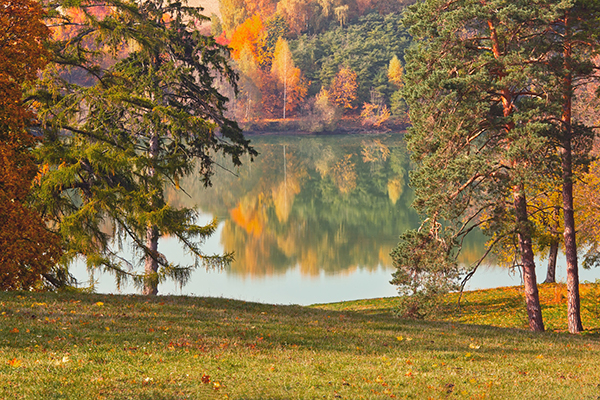
Learn more about the Native Pine Trees of Illinois
Pine trees (Pinus sp) are coniferous evergreen trees found throughout the world in the Northern Hemisphere. There are 126 accepted species of pine trees with as many as 35 unresolved species, making Pinus a very diverse genus. Pine trees can grow anywhere from 50 to well over 200 feet tall and they can also live for more than 1,000 years. They are most easily identified by their needles that stay green year-round and the large brown pine cones they produce. Most species of pine are monoecious and produce male and female pine cones. Male pine cones contain pollen and appear in small clusters and female pine cones are large brown cones that contain seeds. The eastern white pine, pitch pine, and red pine are a few of the pine trees native to the Chicago area.
Learn more about the Native Pine trees in Chicago & Surrounding suburbs.
Sycamore Trees
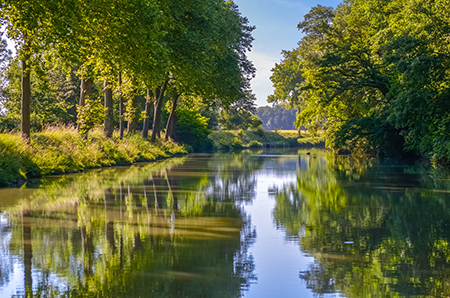
Learn more about the Sycamore Trees of Illinois
Sycamore trees (Platanus sp) are fast growing deciduous trees that can reach more than 100 feet in height. While there are many types of trees that are referred to as sycamores, there are only four species of sycamore known in the world. The American sycamore (Platanus occidentalis) is the only species of sycamore native to the Chicago area. Sycamores have dense canopies with lobed leaves that look similar to maple leaves, but their most identifying characteristic is the bark. The bark is flaky and grayish brown in color and it flakes off, revealing patches of the lighter colored wood underneath.
Learn more about the Sycamore trees in Chicago & Surrounding suburbs.
Basswood Trees
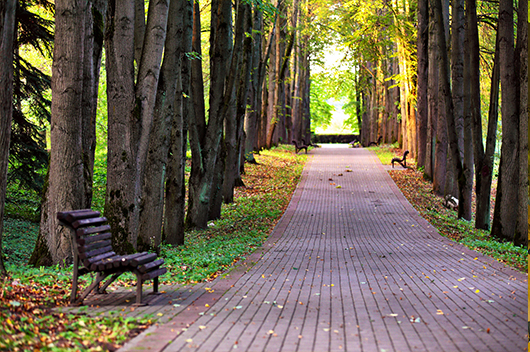
Learn more about the Basswood Trees of Illinois
Basswood trees (Tilia sp), also known as linden trees, are medium to tall trees with distinctly shaped expansive canopies that are found throughout temperate regions of the Northern Hemisphere. There are around 30 species of known basswood trees with only about a handful native to the U.S. The American basswood (Tilia americana) is native to the Chicago area. The canopies of American basswoods are dense and pyramidal in shape with large heart-shaped leaves with lightly serrated edges. They produce small, fragrant flowers that appear in hanging clusters and attract songbirds in the summer. During the fall, their dense canopies turn golden yellow to orange before the tree loses its leaves.
Learn more about the Basswood Trees in Chicago & Surrounding suburbs.
Holly Trees
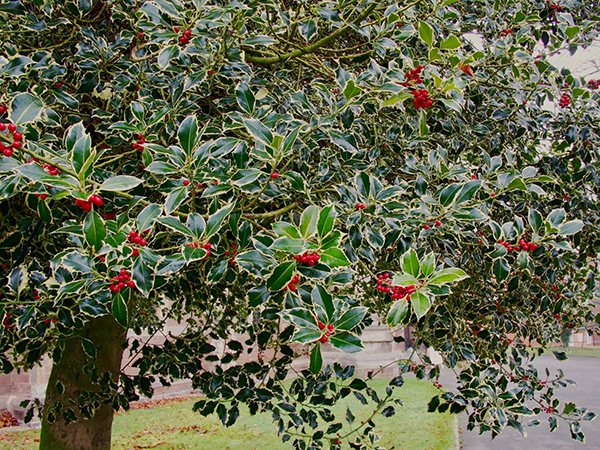
Learn more about the Holly Trees of Illinois
Holly trees (Ilex sp) are flowering trees that are found throughout the world in both temperate and subtropical regions. There are as many as 600 species of holly trees that includes trees and shrubs that can be either evergreen or deciduous. The evergreen American holly and deciduous winterberry tree are the two most common types of holly trees found in the Chicago area. The leaves may differ slightly in appearance between species as American holly trees have elliptical leaves with spiny teeth along the edges and winterberry leaves have a finely serrated edge. The bright red berry-like fruits are the most defining characteristic of holly trees. These fruits only grow on female plants, but they must be fertilized by male plants.
Learn more about the Holy Trees in Chicago & Surrounding suburbs.
Magnolia Trees
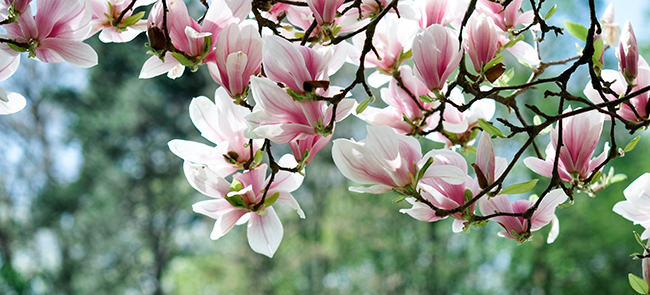
Learn more about the Magnolia Trees of Illinois
Magnolia trees (Magnolia sp.) are an ancient genus of plants that can be traced back 95 million years. There are 210 species of evergreen and deciduous magnolia plants that range from shrubs to large trees, and they are mainly found in Southeast Asia, Central America, Mexico, and the southeastern U.S. There are 8 species of magnolia trees in the U.S. and the cucumber tree (Magnolia acuminata) is the only one native to Illinois. The defining characteristics of magnolia trees are their showy, fragrant flowers and cone like fruits. Magnolia flowers tend to be large and white in color and their fragrances can be smelled from a great distance.
Learn more about Magnolia Trees in the Chicago area.

